|
Books Should Be Free Loyal Books Free Public Domain Audiobooks & eBook Downloads |
|
|
Books Should Be Free Loyal Books Free Public Domain Audiobooks & eBook Downloads |
|
Top Authors |
|---|
|
Book type:
Sort by:
|
By: Charles Kingsley (1819-1875) | |
|---|---|
 Heroes; Or, Greek Fairy Tales for my Children
Heroes; Or, Greek Fairy Tales for my Children
This is Kingsley's masterful retelling of the Greek stories about their Heroes and in a manner suitable for children. "why have I called this book ‘The Heroes’? Because that was the name which the Hellens gave to men who were brave and skilful, and dare do more than other men. At first, I think, that was all it meant: but after a time it came to mean something more; it came to mean men who helped their country; men in those old times, when the country was half-wild, who killed fierce beasts and evil men, and drained swamps, and founded towns, and therefore after they were dead, were honoured, because they had left their country better than they found it... | |
 Christmas Carol
Christmas Carol
volunteers bring you 10 recordings of A Christmas Carol by Charles Kingsley. This was the Weekly Poetry project for December 22, 2019. ------ Charles Kingsley was a broad church priest of the Church of England, a university professor, social reformer, historian and novelist. He is particularly associated with Christian socialism, the working men's college, and forming labour cooperatives that failed but led to the working reforms of the progressive era. - Summary by Wikipedia | |
By: Charles Kingston | |
|---|---|
 Remarkable Rogues: The Careers of Some Notable Criminals of Europe and America
Remarkable Rogues: The Careers of Some Notable Criminals of Europe and America
The title and subtitle pretty much say it all. Twenty biographical sketches of people you would not want your son or daughter to marry. | |
By: Charles Knight (1791-1873) | |
|---|---|
 Mind Amongst the Spindles
Mind Amongst the Spindles
Lowell Massachusetts was founded in the 1820s as a planned manufacturing center for textiles and is located along the rapids of the Merrimack River, 25 miles northwest of Boston. By the 1850s Lowell had the largest industrial complex in the United States. The textile industry wove cotton produced in the South. In 1860, there were more cotton spindles in Lowell than in all eleven states combined that would form the Confederacy. Mind Amongst the Spindles is a selection of works from the Lowell Offering, a monthly periodical collecting contributed works of poetry and fiction by the female workers of the textile mills... | |
By: Charles Knowles Bolton (1867-1950) | |
|---|---|
 Private Soldier Under Washington
Private Soldier Under Washington
Much was been written about the American Revolution, but our knowledge of the private solders of the patriot army is confined chiefly to Washington’s description of their sufferings at Valley Forge. This 1902 book by a Harvard University librarian helps to fill in the picture of the common soldier throughout the war by collating references from a great many primary and secondary sources. - Summary by Book Preface and David Wales | |
By: Charles L. Fontenay | |
|---|---|
 Rebels of the Red Planet
Rebels of the Red Planet
Dark Kensington had been dead for twenty-five years. It was a fact; everyone knew it. Then suddenly he reappeared, youthful, brilliant, ready to take over the Phoenix, the rebel group that worked to overthrow the tyranny that gripped the settlers on Mars.The Phoenix had been destroyed not once, not twice, but three times! But this time the resurrected Dark had new plans, plans which involved dangerous experiments in mutation and psionics.And now the rebels realized they were in double jeopardy.... | |
By: Charles Lamb | |
|---|---|
 The Adventures of Ulysses
The Adventures of Ulysses
In The Adventures of Ulysses, Charles Lamb re-tells the story of Ulysses’s journey from Troy to his own kingdom of Ithaca. The book uses Homer’s The Odyssey as the basis for the story, but it isn’t a direct translation of the Greek classic. The book is considered a modern version of the epic tale when it was published in 1808. In the preface of the book, Lamb said that he made the narration of the story faster so that more readers would be attracted to it. To begin with, Homer’s Odyssey is already a classic and in re-telling this story, Charles Lamb aimed to make this epic poem more comprehensible to the average person... | |
 Tales from Shakespeare
Tales from Shakespeare
This little gem of a book was probably the first introduction to Shakespeare that most readers have had as children. Tales from Shakespeare was written in 1807 by a young clerk called Charles Lamb in the offices of the East India Company. Lamb co-authored them with his beloved sister Mary. The pair lived together for life, having gone through immense trauma caused by mental illness and tragedy. However, far from being a melancholy duo, they led an active and ample social life in the company of some of the literary greats of the Romantic movement of the 19th century... | |
 Mr. H
Mr. H
Mr H is a farce that was first performed at Drury Lane in 1806. The plot is slender and revolves around a single rather feeble joke, but the characters are skilfully drawn and the sharp observations of contemporary fashion do much to divert the listener from the weakness of the central theme. More a comedy of manners rather than a true farce, this short play is best enjoyed as a gentle romp through the eccentricities of the Regency period. | |
 Elia; and The Last Essays of Elia
Elia; and The Last Essays of Elia
Elia and The Last Essays of Elia are two collections of essays written by Charles Lamb. The essays first began appearing in The London Magazine in 1820 and continued to 1825. They were very popular and were printed in many subsequent editions throughout the nineteenth century. The personal and conversational tone of the essays has charmed many readers. Lamb himself is the Elia of the collection, and his sister Mary is "Cousin Bridget." Lamb took the name of Elia from an old Italian clerk at the South-Sea House in Lamb's time of employment there; that is, in 1791-1792... | |
By: Charles Lathrop Pack (1857-1937) | |
|---|---|
 School Book of Forestry
School Book of Forestry
Written by a third-generation timberman, this book discusses what forests are, their primary enemies, and their benefits to others. Additionally, mention is made of the U.S. National Forest system. | |
By: Charles M. Skinner (1852-1907) | |
|---|---|
 American Myths and Legends, Volume 1
American Myths and Legends, Volume 1
American Myths and Legends is another collection of folklore from author Charles M. Skinner, whose exhaustive and expansive work in the field popularized many of these stories in the public imagination. It is intended as a follow-up work to his multivolume magnum opus, Myths and Legends of Our Own Land. This is the first of two volumes. - Summary by ChuckW | |
By: Charles Mackay (1814-1889) | |
|---|---|
 Memoirs of Extraordinary Popular Delusions and the Madness of Crowds
Memoirs of Extraordinary Popular Delusions and the Madness of Crowds
The book chronicles and vilifies its targets in three parts: “National Delusions”, “Peculiar Follies”, and “Philosophical Delusions”.The subjects of Mackay’s debunking include alchemy, beards (influence of politics and religion on), witch-hunts, crusades and duels. Present day writers on economics, such as Andrew Tobias, laud the three chapters on economic bubbles. | |
By: Charles Macklin (1699-1797) | |
|---|---|
 Will and No Will or a Bone for the Lawyers
Will and No Will or a Bone for the Lawyers
This "Afterpiece" - a short play to follow a main production - was first produced in 1746. It was based on Regnard's five-act comedy le Legetaire Universel (1707), which is itself a composite of Italian comedy with echoes of Molière, moving from scene to scene with little effort at logical consistency or structure but treating each scene autonomously for its own comic value. The rather long Prologue to A WILL AND NO WILL (11 pages of manuscript) makes fun of the convention of the eighteenth century prologues by the familiar dodge of having actors chatting as though they were in the Pit waiting for the actors in the preceding main play to dress for the afterpiece. | |
By: Charles MacLaurin (1872-1925) | |
|---|---|
 Post Mortem: Essays, Historical And Medical
Post Mortem: Essays, Historical And Medical
This 1922 collection of extensive essays comprises well written biographies of a few famous folk. The life narratives include analyses of medical and/or psychological elements in each person’s life. Biographies include Anne Boleyn, Jeanne D’Arc, The Empress Theodora, The Emperor Charles V, Don John Of Austria, Cervantes, Don Quixote , Philip II, Mr. and Mrs. Pepys, Edward Gibbon, Jean Paul Marat, Napoleon I, and Benvenuto Cellini. It concludes with an extended meditation on death. “But there... | |
By: Charles Major (1856-1913) | |
|---|---|
 When Knighthood Was in Flower
When Knighthood Was in Flower
Set during the Tudor period of English history, When Knighthood Was in Flower tells the tribulations of Mary Tudor, a younger sister of Henry VIII of England who has fallen in love with a commoner. However, for political reasons, King Henry has arranged for her to wed King Louis XII of France and demands his sister put the House of Tudor first, threatening, "You will marry France and I will give you a wedding present – Charles Brandon's head!" | |
 Bears of Blue River
Bears of Blue River
This delightful story is the tale of young Balser Brent, who has a knack for running into bears. Usually the bears come out of the interaction worse than the feisty and brave Balser. A great story for both boys and girls who enjoy adventure and excitement. | |
By: Charles Maurice Stebbins (1871-1937) | |
|---|---|
 Christmas Eve, and other Poems
Christmas Eve, and other Poems
This is a collection of poems by C. Maurice Stebbins. The titular poem is a Christmas poem, but it is dark and somber in tone. The following shorter pieces are very varied, making for a beautiful little collection. - Summary by Carolin | |
By: Charles McRae | |
|---|---|
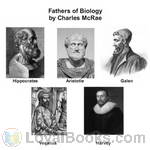 Fathers of Biology
Fathers of Biology
An account given of the lives of five great naturalists (Hippocrates, Aristotle, Galen, Vesalius and Harvey) will not be found devoid of interest. The work of each one of them marked a definite advance in the science of Biology. There is often among students of anatomy and physiology a tendency to imagine that the facts with which they are now being made familiar have all been established by recent observation and experiment. But even the slight knowledge of the history of Biology, which may be obtained from a perusal of this little book, will show that, so far from such being the case, this branch of science is of venerable antiquity... | |
By: Charles Merivale (1808-1893) | |
|---|---|
 Roman Triumvirates
Roman Triumvirates
In this short volume, the British historian, Charles Merivale, describes the long conflict by which the rule of one man replaced the Roman Republic. Here we meet that ineffectual has-been Pompeius, the resourceful military and political genius, Julius Caesar, unbending Cato, brave, dissolute Marcus Antonius, grandiloquent, doomed Cicero, peerless Cleopatra and, almost the sole survivor, crafty, cold, and sagacious young Octavius | |
By: Charles Miner Thompson (1864-1941) | |
|---|---|
 The Calico Cat
The Calico Cat
The consequences of letting your irritation get the better of you are humorously portrayed in this story of a self-important man who fires a shotgun at an annoying cat on his fence.. and hits a man skulking in the bushes. What did the cat do to enrage him? Why was the man in the bushes? And how can the whole matter be covered up and done away with before the neighbors start gossiping? | |
By: Charles Monroe Sheldon (1857-1946) | |
|---|---|
 In His Steps
In His Steps
In His Steps takes place in the railroad town of Raymond. The main character is the Rev. Henry Maxwell, pastor of the First Church of Raymond, who challenges his congregation to not do anything for a whole year without first asking: “What Would Jesus Do?” (taken from Wikipedia) | |
 His Brother's Keeper
His Brother's Keeper
Stuart Duncan arrives home from college to find the workers in his father's mine on the brink of a strike. Leading the strike is Stuart's boyhood friend, Eric Vassal. Will they be estranged by the opposing forces? Or can they learn to work together as Stuart learns the true meaning of being His Brother's Keeper? | |
 In His Steps (version 2 Dramatic Reading)
In His Steps (version 2 Dramatic Reading)
After a strange event at the Raymond First Church, Reverend Henry Maxwell asks his congregation a startling question: Will they pledge to try and do only what Jesus would for an entire year? Even more important, however is the question: Who will follow through the whole way? Narrated by: Glenn Koster, Jr. and Maggie Travers Rev. Henry Maxwell: Larry Wilson Mary Maxwell, Letter writer 4, Loreen, Rose Sterling, and Carlsen: Beth Thomas Tramp and the Bishop: David Olson Choir Soprano, Rachel Winslow, Girl 2, and Rough: Adele de Pignerolles Choir Alto, Customer, Letter writer 2, Virginia Page, Mrs... | |
 All the World
All the World
The Great War is over and the soldier boys are back home, but some of them just can't settle down again. Neither can the girls who helped out both on the foreign and the home front. Dr. Ward notices, but doesn't know how to help until one Sunday after his sermon, when something happens to change the lives of many in their town. | |
 For Christ and the Church (dramatic reading)
For Christ and the Church (dramatic reading)
Rev. Mark Spencer is about to give up on writing his sermon one Saturday night when the Devil comes to him and tries to discourage him by reminding him how few of the people who have pledged themselves to make their motto, 'For Christ and the Church' keep it. The minister decides to preach a sermon like nothing the people in his congregation have ever heard before--a sermon that stirs them to action and to give themselves fully to God. A sermon that urges them to pledge themselves again to Christ and the Church! - Summary by Esther ben SimonidesCast ListRev... | |
 Born to Serve
Born to Serve
Despite a college education and a good family name, Barbara cannot get the teaching job she needs to help her mother and herself through some hard years. When she sees a need for a hired girl in her community, Barbara makes the unthinkable choice of lowering herself to the work of a servant. But is service really to be despised? And must all the challenges and snubs which come with the position rob her young life of its purpose, joy, and hopes and dreams? - Summary by HannahMary | |
By: Charles Morris (1833-1922) | |
|---|---|
 Historical Tales
Historical Tales
Volume I of a series containing anecdotes and stories, some well-known, others less so, of particular countries. This first volume comprises the discovery, colonization, founding, and early years of the United States of America, describing history for children and young adults in an exiting and novel manner. | |
 The San Francisco Calamity by Earthquake and Fire
The San Francisco Calamity by Earthquake and Fire
The first half of this book describes the devastating earthquake that hit San Francisco in 1906, and the subsequent destruction caused by fire. Various eyewitnesses and victims give their account on the tragedy. In the second half, a number of different other earthquakes and volcanic eruptions are retold, like the eruption of the Vesuvius that destroyed Pompeij or the explosion of the Krakatoa, together with scientific explanations for the causes of earthquakes and the eruption of volcanos. | |
 Historical Tales, Vol VI: French
Historical Tales, Vol VI: French
Volume VI of a series containing anecdotes and stories, some well-known, others less so, of particular countries. This fifth volume covers the history of France from the Hun invasion of Europe in the 5th century up to the Prussian War, describing history for children and young adults in an exciting and novel manner. (Introduction by Kalynda) | |
 Historic Tales
Historic Tales
Historical Tales, The Romance of RealityBy CHARLES MORRISPREFACE.It has become a commonplace remark that fact is often stranger than fiction. It may be said, as a variant of this, that history is often more romantic than romance. The pages of the record of man's doings are frequently illustrated by entertaining and striking incidents, relief points in the dull monotony of every-day events, stories fitted to rouse the reader from languid weariness and stir anew in his veins the pulse of interest in human life... | |
 Chronicles of America Volume 09 - Colonial Folkways
Chronicles of America Volume 09 - Colonial Folkways
This work according to the subtitle is "a chronicle of American life in the reign of the Georges." It describes land, locales, houses, habits, diversions, learning, religion, labor, and travel. | |
 Historical Tales, Volume VII: Spanish
Historical Tales, Volume VII: Spanish
Volume VII of a series containing anecdotes and stories, some well-known, others less so, of particular countries. This seventh volume covers the history of Spain from before the Moorish conquest to the loss of overseas territories at the end of the 19th century, describing history for children and young adults in an exciting and novel manner. - Summary by Kalynda | |
 Historical Tales, Volume VIII: Russian
Historical Tales, Volume VIII: Russian
These Russian tales span the time of Russia's founding in the 800s-900s all the way to the early twentieth century and are factually based, although particularly the older tales have become legendary. | |
By: Charles Neville Buck (1879-1930) | |
|---|---|
 The Tyranny of Weakness
The Tyranny of Weakness
Torn between her love for her aging father, a minister steeped in the puritanical values of old New England, and the young Virginian who was born and raised of southern chivalrous tradition, the many and conflicting emotions which stir deep within Conscience Williams envelop this tale of desire, devotion, inner strength, devious treachery, and individuality of spirit. | |
By: Charles Nordmann (1881-1940) | |
|---|---|
 Einstein and the Universe
Einstein and the Universe
"M. Nordmann has presented Einstein’s principle in words which lift the average reader over many of the difficulties he must encounter in trying to take it in. Remembering Goethe’s maxim that he who would accomplish anything must limit himself, he has not aimed at covering the full field to which Einstein’s teaching is directed. But he succeeds in making many abstruse things intelligible to the layman." - Summary by from the Preface by Viscount Haldane Giving significant credit to Henri... | |
By: Charles Norris Williamson (1859-1920) | |
|---|---|
 The Second Latchkey
The Second Latchkey
Jewelry thefts, society parties, clairvoyance, and romance marks this mystery, which is set in England and the US in the early 20th century. | |
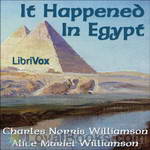 It Happened In Egypt
It Happened In Egypt
Lord Ernest Borrow and Captain Anthony Fenton think they know a secret – a secret that could make them both rich. En route, they are sidetracked by Sir Marcus Antonius Lark, a woman who thinks she’s Cleopatra reincarnate, a Gilded Rose of an American Heiress, and Mrs. Jones, a mysterious Irish woman with a past. Will they find the secret? Or will the trip up the Nile on the Enchantress Isis net them another discovery altogether? | |
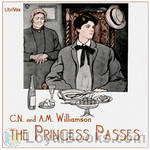 The Princess Passes
The Princess Passes
An American heiress nicknamed the Manitou Princess (after her daddy’s richest silver mine) is devastated to find that her fiancé only loves her money, so she does what anyone might do: she bolts for Europe, dons male attire and sets out on a walking tour of the Alps, passing as a teenage boy. Though professing hatred of all men, she soon falls in with a just-jilted English lord, aptly named Monty Lane, who is attempting to walk off a broken heart of his own. The Princess Passes presents the ups and downs of their alpine relationship through the unpenetrating eyes of Lord Lane... | |
 The Golden Silence
The Golden Silence
Trying to get away from an engagement he had got himself into more or less against his will, Stephen Knight travels to Algiers to visit his old friend Nevill. On the Journey there he meets the charming and beautiful Victoria. She is on her way to Algiers to search for her sister, who had disappeared years ago after marrying an Arab nobleman. With the support of his friend, Stephen Knight decides to help the girl - but when she also disappears, the adventure begins... | |
 Secret history revealed by Lady Peggy O'Malley
Secret history revealed by Lady Peggy O'Malley
"If, two years ago, when I was sixteen, I hadn’t wanted money to buy a white frock with roses on it, which I saw in Selfridge’s window, a secret crisis between the United States and Mexico would have been avoided; and the career of a splendid soldier would not have been broken.” Read here what happened to the girl, the soldier, and the white frock. - Summary by Carolin | |
By: Charles Perrault (1628-1703) | |
|---|---|
 The Fairy Tales of Charles Perrault
The Fairy Tales of Charles Perrault
This book is an early collection of ten well-known fairy tales. It is thought to have begun the genre of fairy tales. | |
 Sleeping Beauty and other fairy tales (version 2)
Sleeping Beauty and other fairy tales (version 2)
The Sleeping Beauty, Bluebeard, Cinderella and Beauty and the Beast. All stories we of course have heard many times. But these are retold by Sir Arthur Quiller-Couch in a unique way that keeps the flavor of the original French of Perrault but adds a delightful easy of reading and speaking them. - Summary by Phil chenevert. | |
By: Charles R. Gibson (1870-1931) | |
|---|---|
 The Autobiography of an Electron
The Autobiography of an Electron
"While many scientific men now understand our place in the universe, we electrons are anxious that every person should know the very important part which we play in the workaday world. It was for this reason that my fellow-electrons urged me to write my own biography. I am pleased to say that my relationship with the scribe who has put down my story in the following pages has been of the most friendly description. I have allowed him to place what he calls "The Scribe's Note" at the beginning of each chapter, but it will be understood clearly that these are merely convenient embellishments, and that I am responsible for the story of my own experiences." (Introduction adapted from the text) | |
 Romance of Modern Electricity
Romance of Modern Electricity
From the series, The Library of Romance, this book introduces the reader to the modern concepts of electricity. The author discusses how man came to know about electricity, and how it powers the world of 1910. | |
 Romance of Modern Photography
Romance of Modern Photography
It is not the author's purpose in the present volume to give any instruction in the practice of photography. There are many works dealing with the practical side of the subject. His object is to tell the romantic story of the discovery of this wonderful art, and the steps by which its range has been extended until it can achieve results which only a few years ago would have been thought impossible. A glance at the list of chapters will show what a wide field photography now covers, and what service it renders to man, both in his everyday life and in his most subtle scientific researches. - Summary by The Author | |
By: Charles Raymond Beazley (1868-1955) | |
|---|---|
 Prince Henry the Navigator, the Hero of Portugal and of Modern Discovery
Prince Henry the Navigator, the Hero of Portugal and of Modern Discovery
Prince Henry was a significant explorer and adventurer in a period of enlightenment and expansion of European trade and knowledge of the world beyond its borders. He is considered a prime instigator of what has become known as The Age of Discovery and was responsible for the early development of Portuguese exploration and maritime trade with other continents through the systematic exploration of Western Africa, the islands of the Atlantic Ocean, and the search for new routes. | |
By: Charles Reade (1814-1884) | |
|---|---|
 Cloister and the Hearth
Cloister and the Hearth
'The Cloister and the Hearth', by Charles Reade, was published in 1861. It's a long and winding picaresque novel set in 15th century Europe, telling the story of the love between Gerard Eliason, an artist turned priest, and Margaret Brandt, the daughter of a poor scholar, and reflects the conflict between family and church which overshadowed the lives of so many in medieval times. Its uniqueness lies in... | |
By: Charles Robert Maturin (1782-1824) | |
|---|---|
 Melmoth The Wanderer
Melmoth The Wanderer
One of the first horror novels, it tells the story of Melmoth, who sells his soul so he could have an extended life. Throughout the novel, he wanders around the world in search of someone who would replace him and lift his curse. It is known for its many sub-plots, the true horror it makes one feel, and its criticism of the Catholic church. This is certainly one of the most important books of all times, quoted in countless other works, and praised by authors and critics alike. - Summary by Wikipedia and Stav Nisser. | |
By: Charles Rogers (1825-1890) | |
|---|---|
 Modern Scottish Minstrel
Modern Scottish Minstrel
Subtitled "Songs of Scotland of the Past Half-Century, with Memoirs of the Poets, and Sketches and Specimens in English Verse of the Most Celebrated Modern Gaelic Bards." | |
By: Charles Ross Jackson (1857-1915) | |
|---|---|
 Quintus Oakes: A Detective Story
Quintus Oakes: A Detective Story
There have been a series of assaults at the manor house, one sending the mistress of the house insane with fear, another escalating to murder. There are reports of a tread on the stairs and shady figures disappearing from view. The servants blame the supernatural, but Quintus Oakes gets to the bottom of the mystery. | |
By: Charles S. Brooks (1878-1934) | |
|---|---|
 Wappin' Wharf: A Frightful Comedy of Pirates
Wappin' Wharf: A Frightful Comedy of Pirates
We had hoped that our drama's scene might lie on a pirate ship at sea. We had wished for a swaying mast, full-set with canvas—a typhoon to smother our stage in wind. We had hoped to walk a victim off the plank, with the sea roaring in the wings. But our plot deals stubbornly with us. Alas, our pirates grow old and stiff. They have retired, as we say, from active practice and live in easy luxury on shore. Yet we shall see that their villainy still thrives. - Summary from Prologue By the way, Section 0 has a buncha interesting explanations by the author on why and how the play came about and is called what it is - with no spoilers... | |
 At The Sign of The Greedy Pig
At The Sign of The Greedy Pig
"Sometimes, in a mood of Spanish castles, there flits across my fancy the vision of an ancient city on a hill-top, with lofty battlements thrust upward from the rock and towers that stand on tip-toe…. Our stage is the square of this ancient city, seen dimly in the night.... The time of our play is remote and I choose to think the world is flat, that comets are of evil prophecy and witches still ride on the windy moon...." Published in the same book as "Wappin' Wharf: A Frightful Comedy of Pirates", this story is subtitled "A Frightful Comedy of Beggars"... | |
By: Charles Simeon (1759-1836) | |
|---|---|
 Malachi, from Horae Homileticae
Malachi, from Horae Homileticae
Simeon's Works, as they were published 1832, fill twenty-one large octavo volumes, and the title-page reads, "Horae Homileticae or Discourses now first digested into one continued Series and forming a Commentary upon every book of the Old and New Testament ; to which is annexed an improved Edition of a Translation of Claude's Essay on the Composition of a Sermon". It was the literary achievement of his life, and no unworthy one. These volumes, now long out of print, contain many discourses fully... | |
By: Charles Spurgeon (1834-1892) | |
|---|---|
 Spurgeon's Sermons May 1858
Spurgeon's Sermons May 1858
Charles Spurgeon was a popular Baptist minister in London in mid-Victorian times; his ministry was highly influential and had a significant effect on many families in London and further afield. It was difficult to find a hall large enough to accommodate the crowd who wished to hear him. At times the Royal Surrey Gardens’ Music Hall was hired to accomodate the Sunday congregation; this could seat 10,000 but large numbers were unable to gain admittance. His world-wide heritage is very much with us today through the many chuches built, missionary work begun, children’s charity founded and theological colleges established as a result of his ministry... | |
 Morning and Evening: Daily Readings
Morning and Evening: Daily Readings
Organized by week, this devotional has a morning and evening meditation for every day of the year. Although these devotions are short in length, they are filled with spiritual goodness. In just a few sentences, Spurgeon is able to convey the wisdom of Scripture with eloquence and purpose. These daily messages provide Christians with the spiritual energy they need to begin and end each day. Spurgeon weaves a verse of Scripture into each devotion, helping readers draw deeper meaning out of the selected passages... | |
By: Charles Sternberg (1850-1943) | |
|---|---|
 Life of a Fossil Hunter
Life of a Fossil Hunter
Charles Sternberg was an American fossil collector and paleontologist. He was active in both fields from 1876 to 1928, and collected fossils for private collectors as well as for international museums. This book is part travelogue, part paleontology, and part historical narrative of life on the open prairie. In it, Sternberg tells of his early interest in fossil hunting as a boy, and scientific expeditions from his first in 1876 to one for the Munich Museum in 1901. - Summary by Ava | |
By: Charles Tennyson Turner (1808-1879) | |
|---|---|
 Summer Night in the Beehive
Summer Night in the Beehive
LibriVox volunteers bring you ten recordings of "A Summer Night in the Beehive." The Weekly Poem for August 24, 2014 brings us the night sounds of the meadow in summer. | |
By: Charles Todd Quintard (1824-1898) | |
|---|---|
 Doctor Quintard, Chaplain C.S.A. And Second Bishop Of Tennessee Being His Story Of The War (1861-1865)
Doctor Quintard, Chaplain C.S.A. And Second Bishop Of Tennessee Being His Story Of The War (1861-1865)
Charles Quintard was an Episcopal priest who, in spite of his pro-Union stance, volunteered to be a chaplain in the Confederate army in the American Civil War. A sympathetic, warm, intellectual man loved by soldier and civilian alike, he volunteered because he felt that the soldiers from his local area needed him more than his local parish. Within four months of the end of the war, he was elected bishop of the Episcopal Diocese of Tennessee, an election ratified by the Episcopal Church's General Convention in October... | |
By: Charles Tyrwhitt Dawkins (1858-1919) | |
|---|---|
 Night Operations For Infantry - Compiled For The Use Of Company Officers (1916)
Night Operations For Infantry - Compiled For The Use Of Company Officers (1916)
"It must be remembered that many of our men up to the time of their enlistment have passed their lives entirely in large towns, and have rarely been beyond the range of street lamps. Such men, when first taken out in the dark, are helpless; they start at every shadow, stumble even on level ground, make a terrible amount of noise, and are generally in such a state of nervous excitement that they are hardly responsible for their actions. Yet these same men, by a short course of careful, individual instruction, can be trained to work together with confidence on the darkest night, and when once they have gained confidence their further instruction is comparatively easy... | |
By: Charles W. Diffin (1884-1966) | |
|---|---|
 Two Thousand Miles Below
Two Thousand Miles Below
A science fiction novel that was originally produced in four parts in the publication: Astounding Stories in June, September, November 1932, January 1933. The main character is Dean Rawson, who plans on discovering a way of mining power from a dead volcano, but ends up discovering more than he bargained for. | |
 Dark Moon
Dark Moon
Mysterious, dark, out of the unknown deep comes a new satellite to lure three courageous Earthlings on to strange adventures. | |
 The Finding of Haldgren
The Finding of Haldgren
Chet Ballard answers the pinpoint of light that from the craggy desolation of the moon stabs out man's old call for help. | |
By: Charles W. Leadbeater (1854-1934) | |
|---|---|
 Vegetarianism and Occultism
Vegetarianism and Occultism
How does occultism regard vegetarianism? It regards it very favorably, and that for many reasons. These reasons may be divided into two classes: those which are ordinary and physical, and those which are occult or hidden. Let us see in detail why a vegetarian diet is emphatically the purest and the best. | |
By: Charles Waddell Chesnutt (1858-1932) | |
|---|---|
 The Conjure Woman
The Conjure Woman
Published in 1899 by Houghton Mifflin, Chesnutt's first book, The Conjure Woman, was a collection of seven short stories, all set in "Patesville" (Fayetteville), North Carolina. While drawing from local color traditions and relying on dialect, Chesnutt's tales of conjuring, a form of magic rooted in African hoodoo, refused to romanticize slave life or the "Old South." Though necessarily informed by Joel Chandler Harris's popular Uncle Remus stories and Thomas Nelson Page's plantation fiction, The Conjure Woman consciously moved away from these models, instead offering an almost biting examination of pre- and post-Civil War race relations... | |
 The Marrow of Tradition
The Marrow of Tradition
In The Marrow of Tradition, Charles W. Chesnutt--using the 1898 Wilmington, North Carolina massacre as a backdrop--probes and exposes the raw nerves and internal machinery of racism in the post-Reconstruction-era South; explores how miscegenation, caste, gender and the idea of white supremacy informed Jim Crow laws; and unflinchingly revisits the most brutal of terror tactics, mob lynchings. (Introduction by James K. White) | |
 The Wife of His Youth and Other Stories of the Color Line
The Wife of His Youth and Other Stories of the Color Line
Published in 1899, The Wife of His Youth and Other Stories of the Color Line is a collection of narratives that addresses the impact of Jim Crow laws on African Americans and white Americans of the South. Many of Chesnutt's characters are of mixed-race ancestry which sets them apart for a specific yet degrading kind of treatment from blacks and whites. These stories examine particularly how life in the South was informed through a legacy of slavery and Reconstruction—how members of the “old dominion” desperately struggled to breath life into the corpse of an antebellum caste system that no longer defined the path and direction in which this country was headed... | |
 House Behind the Cedars
House Behind the Cedars
In this, Chesnutt's first novel, he tells the tragic story of love set against a backdrop of racism, miscegenation and “passing” during the period spanning the antebellum and reconstruction eras in American history. And through his use of the vernacular prevalent in the South of that time, Chesnutt lent a compassionate voice to a group that America did not want to hear. More broadly, however, Chesnutt illustrated, in this character play, the vast and perhaps insurmountable debt this country continues to pay for the sins of slavery. | |
 Colonel's Dream
Colonel's Dream
In this novel, Chesnutt described the hopelessness of Reconstruction in a post-Civil War South that was bent on reestablishing the former status quo and rebuilding itself as a region of the United States where new forms of "slavery" would replace the old. This novel illustrated how race hatred and the impotence of a reluctant Federal Government trumped the rule of law, ultimately setting the stage for the rise of institutions such as Jim Crow, lynching, chain gangs and work farms--all established with the intent of disenfranchising African Americans. | |
By: Charles Warren Adams (1833-1903) | |
|---|---|
 Notting Hill Mystery
Notting Hill Mystery
Charles Felix was the pseudonym of Charles Warren Adams, an English Lawyer and publisher and is now known to have been the author of "The Notting Hill Mystery", thought to be the first full length detective novel in English. The story first appeared as an eight part serial in a weekly magazine in 1862, and was subsequently published as a single volume novel in 1865. The story deals with the then newly emerging field of 'mesmerism' which we now know as hypnotism, and its use in the planning and execution of three truly devious crimes... | |
By: Charles Warren Stoddard (1843-1909) | |
|---|---|
 The Wonder-Worker of Padua
The Wonder-Worker of Padua
This is the inspiring story of Saint Anthony of Padua (1195-1231). The son of a wealthy Portuguese family, he was initially ordained a priest of the Canons Regular of Saint Augustine. In 1221, he took up the habit of a poor Franciscan friar and devoted his life to fervently preaching the Word of God. His extensive knowledge of Sacred Scripture and keen insights into its profound spiritual meaning astonished his hearers. To confirm the efficacy of his words, God gave him the gifts of prophecy and of performing miracles, the most memorable of which he worked in Padua in northern Italy, where he resided for many years... | |
 The Lepers of Molokai
The Lepers of Molokai
This is the story of the lepers of Molokai and of the Roman Catholic missionary, Father Damien, who ministered to those who languished in that desolate place, waiting for death to release them from a most intense form of physical and mental suffering. Fr. Damien, born Jozef De Veuster, was a Roman Catholic priest from Belgium and member of the Congregation of the Sacred Hearts of Jesus and Mary, a missionary religious order. He won recognition for his ministry to people with leprosy (Hansen's disease), who had been placed under a government-sanctioned medical quarantine on the remote island of Molokai in the Kingdom of Hawaii... | |
 South-Sea Idyls
South-Sea Idyls
The American Charles Warren Stoddard wrote quite popular travel books, especially those about Polynesia. South-Sea Idyls was his most popular book. A series of letters to a friend, "They are," wrote William Dean Howells, "the lightest, sweetest, wildest, freshest things that were ever written about the life of that summer ocean." Stoddard also wrote The Lepers Of Molokai , a book that brought Father Damien and his charges to public notice. - Summary by David Wales | |
By: Charles Watts Whistler (1856-1913) | |
|---|---|
 Havelok the Dane: A Legend of Old Grimsby and Lincoln
Havelok the Dane: A Legend of Old Grimsby and Lincoln
Troy, Athens, Rome... each has its founding legend. So too does the Lincolnshire town of Grimsby, once the largest fishing port in the world. Havelok the Dane probably derives from a folk-tale, orally passed down before assuming written form - first in Anglo-Norman French, later in Middle English verse (c. 1280-1300). It tells of the rescue of the Danish prince from a wicked regent, who has tried to procure Havelok's murder. Grim the fisher, the appointed hit-man, thwarts the plan by spiriting the lad to England, where Grim settles with his family on the coast, adopting Havelok as his foster-son and naming the new community after himself... | |
By: Charles Willard Diffin (1884-1966) | |
|---|---|
 Moon Master
Moon Master
Through Infinite Deeps of Space Jerry Foster Hurtles to the Moon—Only to be Trapped by a Barbaric Race and Offered as a Living Sacrifice to Oong, their Loathsome, Hypnotic God. | |
 Brood of the Dark Moon
Brood of the Dark Moon
Once more Chet, Walt and Diane are united in a wild ride to the Dark Moon—but this time they go as prisoners of their deadly enemy Schwartzmann. | |
By: Charles Willing Beale (1845-1932) | |
|---|---|
 The Ghost of Guir House
The Ghost of Guir House
Do you think you understand ghosts? Now you will.Paul Henley, seemingly summoned to a mysterious rural Virginia mansion from his home in New York, finds himself as a guest at a remote, dilapidated colonial house with a host and a hostess every bit as mysterious as the house itself. Might Dorothy, his hostess, somehow be implicated in the hideous crime which he came to know took place in the hidden depths of Guir House some years ago? He hardly thought so, she seemed so innocent. And yet .... (Introduction by Roger Melin) | |
By: Charles-François Tiphaigne de La Roche (1722-1744) | |
|---|---|
 Giphantia
Giphantia
After having gone over the whole world and visited all the inhabitants, I find it does not answer the pains I have taken. I have just been reviewing my memoirs concerning the several nations, their prejudices, their customs and manners, their politicks, their laws, their religion, their history; and I have thrown them all into the fire. It grieves me to record such a monstrous mixture of humanity and barbarousness, of grandeur and meanness, of reason and folly. The small part, I have preserv’d, is what I am now publishing. If it has no other merit, certainly it has novelty to recommend it. - Summary by Introduction to Giphantia | |
By: Charles-Louis de Secondat, baron de La Brède et de Montesquieu (1689-1755) | |
|---|---|
 Spirit of Laws (Volume 1)
Spirit of Laws (Volume 1)
This audiobook covers Volume 1 (Books I to XIX) of "The Spirit of the Laws" (French: De "l'esprit des lois", also sometimes called "The Spirit of Laws"). Spirit of Laws is a treatise on political theory first published anonymously by Charles de Secondat, Baron de Montesquieu in 1748 with the help of Claudine Guérin de Tencin. Originally published anonymously partly because Montesquieu's works were subject to censorship, its influence outside of France was aided by its rapid translation into other languages... | |
By: Charlie Chaplin (1889-1977) | |
|---|---|
 My Trip Abroad
My Trip Abroad
"A steak and kidney pie, influenza and a cablegram. There is the triple alliance that is responsible for the whole thing." So begins Charlie Chaplin's My Trip Abroad, a travel memoir charting the actor-director's semi-spontaneous visit to Europe. Fresh off the success of 1921's The Kid, Chaplin decides to "play hookey" after his seven year stay in Hollywood. He return to his native Europe as an international superstar, beloved by fans and hounded by reporters. The "triple alliance" of the book's opening line sends Chaplin on an whirlwind tour through Great Britain, Germany, and France -- and the results are both funny and insightful... | |
By: Charlotte Brontë (1816-1855) | |
|---|---|
 Jane Eyre
Jane Eyre
This timeless novel highlights the abuse and neglect that the orphaned Jane Eyre faced while growing up. This story opens with Jane Eyre being shipped off to be cared for by her uncle Mr. Reed who lived at the Gateshead Hall. Her uncle was always kind to her but his wife, Sarah Reed was anything but. Sarah’s son John and Sarah’s two daughters also contributed to Jane’s torment. Jane was excluded from all family activities and found solace only in her books and dolls. One day John knocked her down and she tried to defend herself... | |
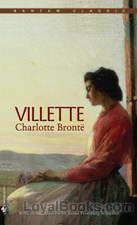 Villette
Villette
Villette was Charlotte Bronte's last published novel. It came out in 1853, just two years before her death in 1855. It is a poignant, strangely lonely and sad work, steeped in conflict between society's demands and personal desires. Set in the fictional town of Villette in France, it is the story of the young and intelligent Lucy Snowe, the narrator in the book. She is described by another character in the book as having “no beauty...no attractive accomplishments...” and strangely seems to lack a personal history or living relatives... | |
 The Professor
The Professor
The book tells the story of a young man named William Crimsworth. It describes his maturation, his loves and his eventual career as a professor at an all-girls’ school. | |
 Shirley
Shirley
Shirley is an 1849 social novel by the English novelist Charlotte Brontë. It was Brontë's second published novel after Jane Eyre (originally published under Brontë's pseudonym Currer Bell). The novel is set in Yorkshire in the period 1811–1812, during the industrial depression resulting from the Napoleonic Wars and the War of 1812. The novel is set against a backdrop of the Luddite uprisings in the Yorkshire textile industry. | |
 Villette (version 2 Dramatic Reading)
Villette (version 2 Dramatic Reading)
After an unspecified family disaster, protagonist Lucy Snowe travels to the fictional city of Villette to teach at an all-girls school where she is unwillingly pulled into both adventure and romance. | |
 Emma: A Fragment of a Story
Emma: A Fragment of a Story
Miss Mabel Wilcox, the owner of a newly opened girl's boarding school, meets the wealthy Mr. Conway Fitzgibbon, who drops off his frail daughter to be educated there. When background checks are made, it is discovered that no well-to-do family by the name of Fitzgibbon exists! Supposed Matilda Fitzgibbon is a pseudo-heiress - a fake! What is Miss Wilcox to do?Published posthumously and prefaced by Charlotte Brontë's editor, W. M. Thackeray, these two chapters are the only existing fragments of Emma, the novel Brontë worked on until her untimely death. Since then, it has been "completed" twice by other authors | |
 Shirley (version 2)
Shirley (version 2)
This work, Charlotte Bronte's second, is set in the England of the early 1800's, which was beset with political and social changes, represented by the Industrial Revolution and the Napoleonic Wars. And there is much to do with those changes in values from those of the past. But at its core, this novel is about romance. And the plot primarily follows the struggles and triumphs of two couples, the two brothers Moore, Louis and Robert, and Caroline Helstone and Shirley Keeldar. The final scenes capture... | |
 Jane Eyre: An Autobiography (version 4)
Jane Eyre: An Autobiography (version 4)
Jane Eyre is an extraordinary orphan girl who is treated horribly by her aunt Mrs. Reed and her children. She is sent away to a girl’s boarding school called Lowood. She studies there for a total of six years and graduates to teach at the same school for two years. After two years of teaching, she leaves Lowood to go looking for another job, at 19. She meets Mrs. Fairfax who decides to give her the job as a governess at Thornfield Hall. She eventually falls in love with Mr. Rochester, the master of Thornfield... | |
 Jane Eyre (version 3 dramatic reading)
Jane Eyre (version 3 dramatic reading)
Primarily of the bildungsroman genre, Jane Eyre follows the emotions and experiences of eponymous Jane Eyre, her growth to adulthood, and her love for Mr. Rochester, the byronic master of Thornfield Hall. | |
 Poems by Currer, Ellis, and Acton Bell (version 2)
Poems by Currer, Ellis, and Acton Bell (version 2)
The Bronte sisters, most famous for their novels, began their career with a slim volume of poetry, published under pseudonyms. It only sold two volumes, but inspired much interest in the identities of the unknown poets. This is a recording of the more successful 1850 edition, which includes additional poems by Emily and Anne which Charlotte collected after their deaths. | |
 Villette (version 3)
Villette (version 3)
A quiet, self-reliant, intelligent, 23-year-old woman, Lucy has, as Miss Ginevra Fanshawe asserts, "no attractive accomplishments – no beauty." She seems to have no living relatives. Though usually reserved and emotionally self-controlled, Lucy has strong feelings and affections for those whom she really values. She even sincerely cares for the giddy Ginevra, albeit in a blunt, curmudgeonly fashion. She is a firm Protestant and denounces Roman Catholicism as false . The novel is initially set in the English countryside, and later follows Lucy Snowe to the fictional Belgian town of Villette, a Gothic town where the majority of the action takes place... | |
By: Charlotte Dacre | |
|---|---|
 Zofloya
Zofloya
Victoria de Loredani lives the life of a fairy tale princess in Venice. She has everything one might desire and more, until the sinister Count Ardolph enters her world. The Count carries off Victoria's mother in an elopement, and sets off a series of dramatic events that begin to unhinge Victoria's life entirely. Passion, brutality, and murder begin to dominate the separated worlds of Victoria and her brother Leonardo. - Summary by Carolin | |
By: Charlotte Evans (1841-1882) | |
|---|---|
 Over the Hills and Far Away: A Story of New Zealand
Over the Hills and Far Away: A Story of New Zealand
One of the very first New Zealand novels, Over the Hills and Far Away is a heavily romanticised tale of a woman's journey from England to Otago, New Zealand, and her subsequent experiences in the wild new colony. - Summary by Lewis Fletcher | |
By: Charlotte Grace O'Brien (1845-1909) | |
|---|---|
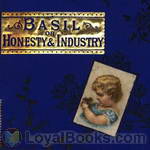 Basil, or, Honesty and Industry
Basil, or, Honesty and Industry
A poor boy discovers the value of honesty and industry. More than that, he discovers the value of his relationship with God. (Introduction by Robert Harder) | |
By: Charlotte Lennox (1730-1804) | |
|---|---|
 The Female Quixote
The Female Quixote
The novel formally inverts Don Quixote: as the don mistakes himself for the knightly hero of a Romance, so Arabella mistakes herself for the maiden love of a Romance. While the don thinks it his duty to praise the platonically pure damsels he meets (such as the woman he loves), so Arabella believes it is in her power to kill with a look and it is the duty of her lovers to suffer ordeals on her behalf. | |
 Life of Harriot Stuart
Life of Harriot Stuart
The Life of Harriot Stuart, Written by Herself presents a complex and problematic view of self-creation in the eighteenth century. Within the novel, there is a constantly reoccurring theme of self-invention through fiction, which is echoed by the author's own use of the novel to shape her identity. Published in December of 1750, Harriot Stuart gained critical praise as a successor of Richardson's Clarissa and by 1752, Charlotte Lennox had become a protégé of Johnson. Lennox's second novel reflects the influences of men like Richardson and Johnson... | |
 Henrietta Volume 1 (dramatic reading)
Henrietta Volume 1 (dramatic reading)
Henrietta is a strong willed young lady who will not give in to her aunt and marry the suitors she proposes. She runs away and adventure ensues. However she meets one young man who she is quite taken with but he does not share all about himself and Henrietta finds herself in some tricky situations. | |
By: Charlotte M. Yonge (1823-1901) | |
|---|---|
 The Little Duke
The Little Duke
The Little Duke by Charlotte M. Yonge is historical fiction based on the the life of Richard, Duke of Normandy. He assumes the title of Duke at only 8 years of age, after his father is murdered. The story first appeared in her magazine, The Monthly Packet, as a serial. | |
 Little Lucy's Wonderful Globe
Little Lucy's Wonderful Globe
Travel with Little Lucy around the globe and learn a little geography and small bits about other cultures. | |
By: Charlotte Maria Tucker (1821-1893) | |
|---|---|
 Spanish Cavalier
Spanish Cavalier
When his father dies, Lucius Lepine goes to Spain as a clerk. His fellow clerk, Don Aguilera, doesn't come to work one day. Lucius is worried, he has heard rumors of what has happened to Aguilera. What has happened? Can Lucius find out? | |